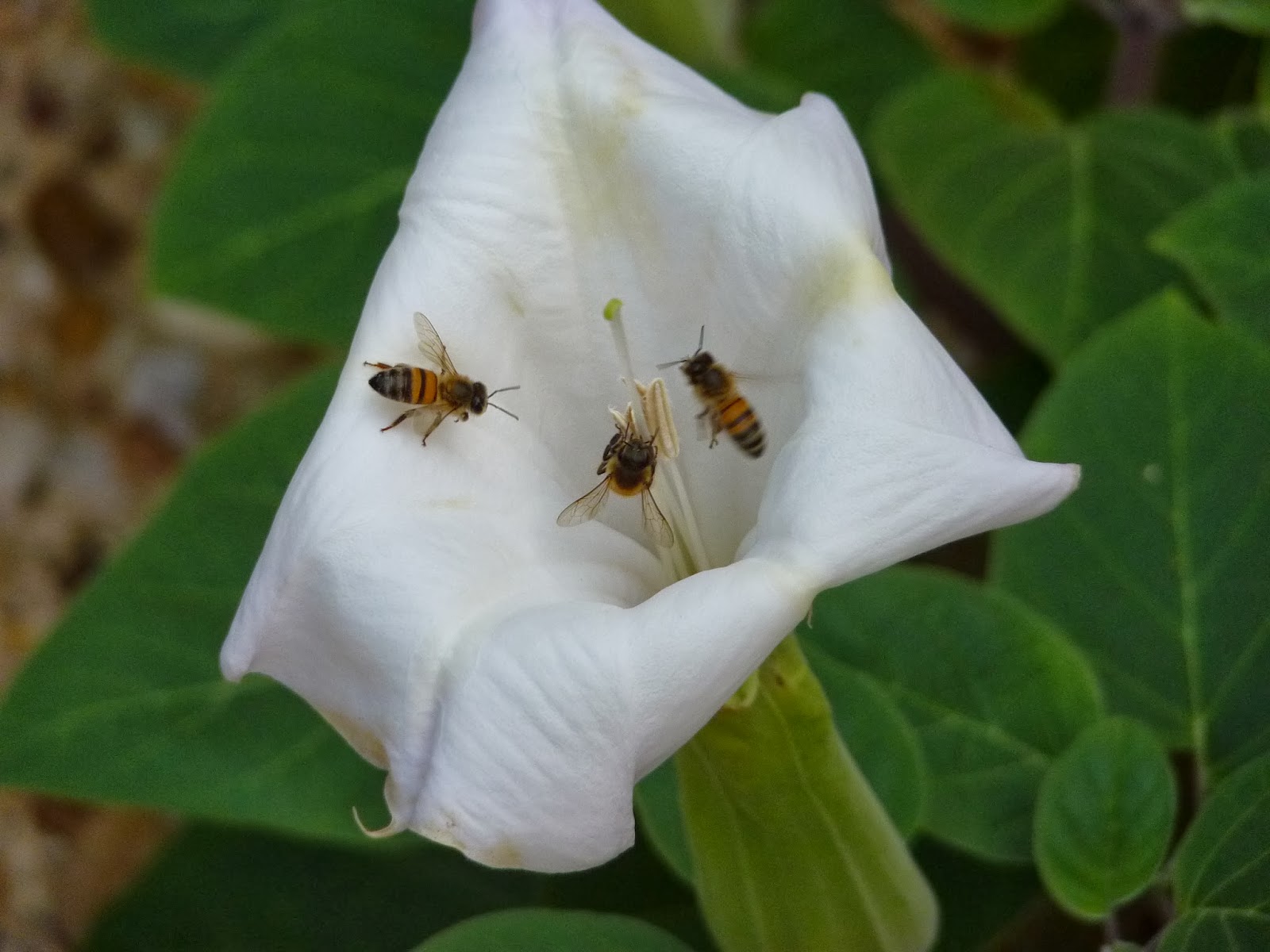Do honeybees act as pollen thieves or pollinators of Datura wrightii?
DOI:
https://doi.org/10.26786/1920-7603(2018)17Abstract
Datura wrightii (Solanaceae), a common shrub in the southwestern United States, bears massive, white, night-blooming flowers that attract and reward hawkmoth pollinators. However, Apis mellifera (honeybee) foragers are often observed on its flowers, especially at dusk and dawn hours. Their foraging activities are focused on the anthers, suggesting they could be pollen thieves. We used a series of observations and manipulative experiments to determine if honeybees are detrimental or beneficial to D. wrightii. We found that honeybees were the most frequent visitors to D. wrightii flowers at both dusk and dawn, and that they removed and carried large amounts of D. wrightii pollen. Flowers were capable of being pollinated at dusk and dawn and a single visit by a honeybee was sufficient to pollinate the flowers and produce fruit. There was no evidence that restricting visitation to diurnal hours yielded fruit set that was different from when we restricted visitation (likely by hawkmoths) to evening hours. These results suggest that honeybees are capable of effective pollination of D. wrightii. Although honeybees might interfere with pollen transmission mediated by their highly specialized hawkmoth pollinators, they may also increase plant fitness by pollinating D. wrightii when hawkmoths are not present.
Downloads
Published
How to Cite
Issue
Section
License
Copyright (c) 2018 Andrew C. McCall, Sarah K. Richman, Eric Thomson, Monica Edgerton, Skyler Jordan, Judith Bronstein

This work is licensed under a Creative Commons Attribution 4.0 International License.
JPE is an open access journal which means that all content is freely available without charge to the user or his/her institution.
Authors who publish with this journal agree to the following terms:
1) Authors retain copyright and grant the journal right of first publication with the work simultaneously licensed under a Creative Commons Attribution License that allows others to share the work with an acknowledgement of the work's authorship and initial publication in this journal.
2) Authors are able to enter into separate, additional contractual arrangements for the non-exclusive distribution of the journal's published version of the work (e.g., post it to an institutional repository or publish it in a book), with an acknowledgement of its initial publication in this journal.
3) Authors are permitted and encouraged to post their work online (e.g., in institutional repositories or on their website) prior to and during the submission process, as it can lead to productive exchanges, as well as earlier and greater citation of published work (See The Effect of Open Access).
To assure a broader targeted audience, content will be included into databases (such as EBSCO) and directories (such as DOAJ).











